 Detail of the wooden columns.
Detail of the wooden columns. 
 Partial view from Ali-Qapu Palace. The dome far in the background is the great Jame-Masque of Isfahan. I'll post a few pictures of it as soon as possible.
Partial view from Ali-Qapu Palace. The dome far in the background is the great Jame-Masque of Isfahan. I'll post a few pictures of it as soon as possible.
 View from the roof of the 2nd floor which is like a great balcony. You can see a small pool with fountain in the foreground and the great Shah-Mosque (now Imam-Mosque) in the background.
View from the roof of the 2nd floor which is like a great balcony. You can see a small pool with fountain in the foreground and the great Shah-Mosque (now Imam-Mosque) in the background. 
 The early 16th century Ali-Qapu Palace is a 7-storey masonary structure. The canopy over the second floor was added later so that provide a more impressive gesture from the square and -may be- make it more comfortable while the king stayed there watching people in the great square (Naqsh-e-Jahan or Imam Square) in formal ceremonies. The palace and the square are listed in the World Heritage Organization monuments.
The early 16th century Ali-Qapu Palace is a 7-storey masonary structure. The canopy over the second floor was added later so that provide a more impressive gesture from the square and -may be- make it more comfortable while the king stayed there watching people in the great square (Naqsh-e-Jahan or Imam Square) in formal ceremonies. The palace and the square are listed in the World Heritage Organization monuments.
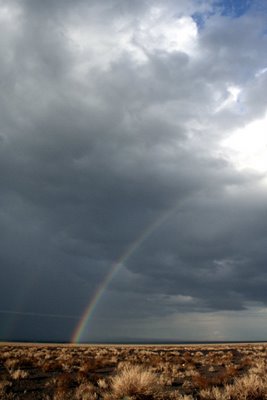 I tok this photo on the way back from Ardestan to Tehran. Ardestan is a small city in central Iran near desert.
I tok this photo on the way back from Ardestan to Tehran. Ardestan is a small city in central Iran near desert. 
 The black form of the tree against the bright background of the sky catched my eye. It was a big tree which I saw in the middle of a road which goes through a jungle. How respectful it is!
The black form of the tree against the bright background of the sky catched my eye. It was a big tree which I saw in the middle of a road which goes through a jungle. How respectful it is! 
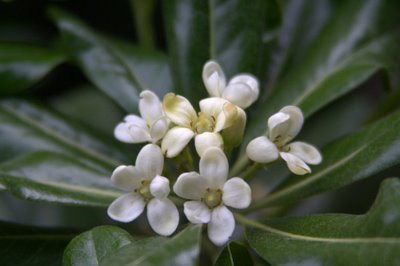 I don't know the name of this flower in English. We call it here 'African Ficus'. It is a kind of lilac. I love its smell.
I don't know the name of this flower in English. We call it here 'African Ficus'. It is a kind of lilac. I love its smell. 
 I am heading for Shushtar tomorrow. It's a historic city in south of Iran. It's very hot. I'll try to take a few pictures after my meetings.
I am heading for Shushtar tomorrow. It's a historic city in south of Iran. It's very hot. I'll try to take a few pictures after my meetings. 
 The place we usually stay on our vacations is in the middle of several citrus gardens. I have lots of pictures of them.
The place we usually stay on our vacations is in the middle of several citrus gardens. I have lots of pictures of them. 
 This is the great square made by Safavid kings in, the then capital of Iran, Isfahan in 16th. There's a special monument on each of the four sides of the square. Sheikh-Lotfollah mosque is in the right, Ali-Qapu Palace in the left, Qeisariieh Bazzar in front and Shah Mosque in behind.
This is the great square made by Safavid kings in, the then capital of Iran, Isfahan in 16th. There's a special monument on each of the four sides of the square. Sheikh-Lotfollah mosque is in the right, Ali-Qapu Palace in the left, Qeisariieh Bazzar in front and Shah Mosque in behind. 
 The view of the river from Si-o-Se-Pol at sunset. When standing here, you'll soon understand that the world behind you (the deck of the bridge with people walking on it) and the world which is in front of you (the landscape and earthscape) create different but harmonious musics. Si-o-Se-Pol is very musical, a temple for the goddess of music may be. In the past years master vocalists with their pupils used to come here. Each one had his own bay for singing and enjoying the temple of music. It's almost a forgotten tradition now.
The view of the river from Si-o-Se-Pol at sunset. When standing here, you'll soon understand that the world behind you (the deck of the bridge with people walking on it) and the world which is in front of you (the landscape and earthscape) create different but harmonious musics. Si-o-Se-Pol is very musical, a temple for the goddess of music may be. In the past years master vocalists with their pupils used to come here. Each one had his own bay for singing and enjoying the temple of music. It's almost a forgotten tradition now. 
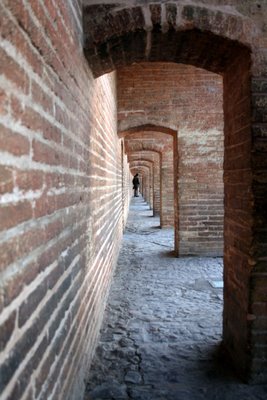 If you look at the previous post you'll see a long arcaded space which makes the external facades of the bridge. People come here to enjoy the river ... it's music, view, fresh air, etc. This is the view of the space for viewing and meditation. The arches make each single bay a more-or-less private space while people can go through.
If you look at the previous post you'll see a long arcaded space which makes the external facades of the bridge. People come here to enjoy the river ... it's music, view, fresh air, etc. This is the view of the space for viewing and meditation. The arches make each single bay a more-or-less private space while people can go through. 
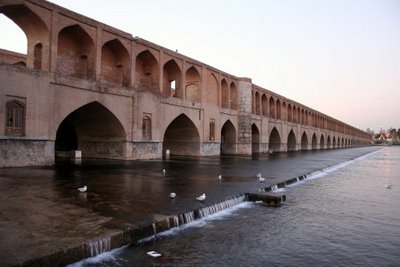 A very beautiful bridge over Zayandeh-Rood (Zayandeh-River) in Isfahan from 16th century. "Si-o-se" verbally means "thirty three" and "pol" is the Persian word for "bridge". So the meaning of the name is: a bridge with thirty three bays.
A very beautiful bridge over Zayandeh-Rood (Zayandeh-River) in Isfahan from 16th century. "Si-o-se" verbally means "thirty three" and "pol" is the Persian word for "bridge". So the meaning of the name is: a bridge with thirty three bays.
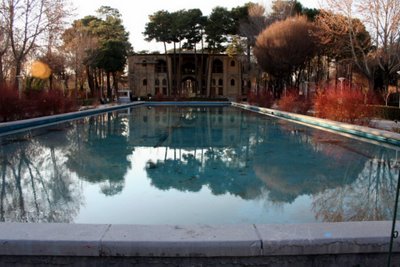 Thank you all for the nice comments on my Hasht-Behesht Palace posts. This is an external view of the palace. The palace was originally in a garden. Now -as you see- the royal garden is changed to a public park. The picture is not very well but gives a general impession of the palace.
Thank you all for the nice comments on my Hasht-Behesht Palace posts. This is an external view of the palace. The palace was originally in a garden. Now -as you see- the royal garden is changed to a public park. The picture is not very well but gives a general impession of the palace. 
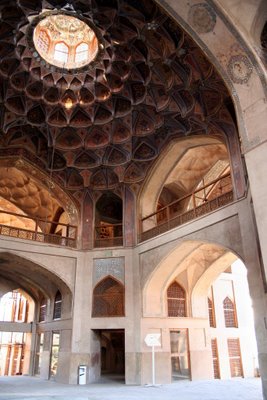 The interior of a palace from Safavid era (17th) in Isfahan. Hasht -Behesht literary means "eight paradises".
The interior of a palace from Safavid era (17th) in Isfahan. Hasht -Behesht literary means "eight paradises". 